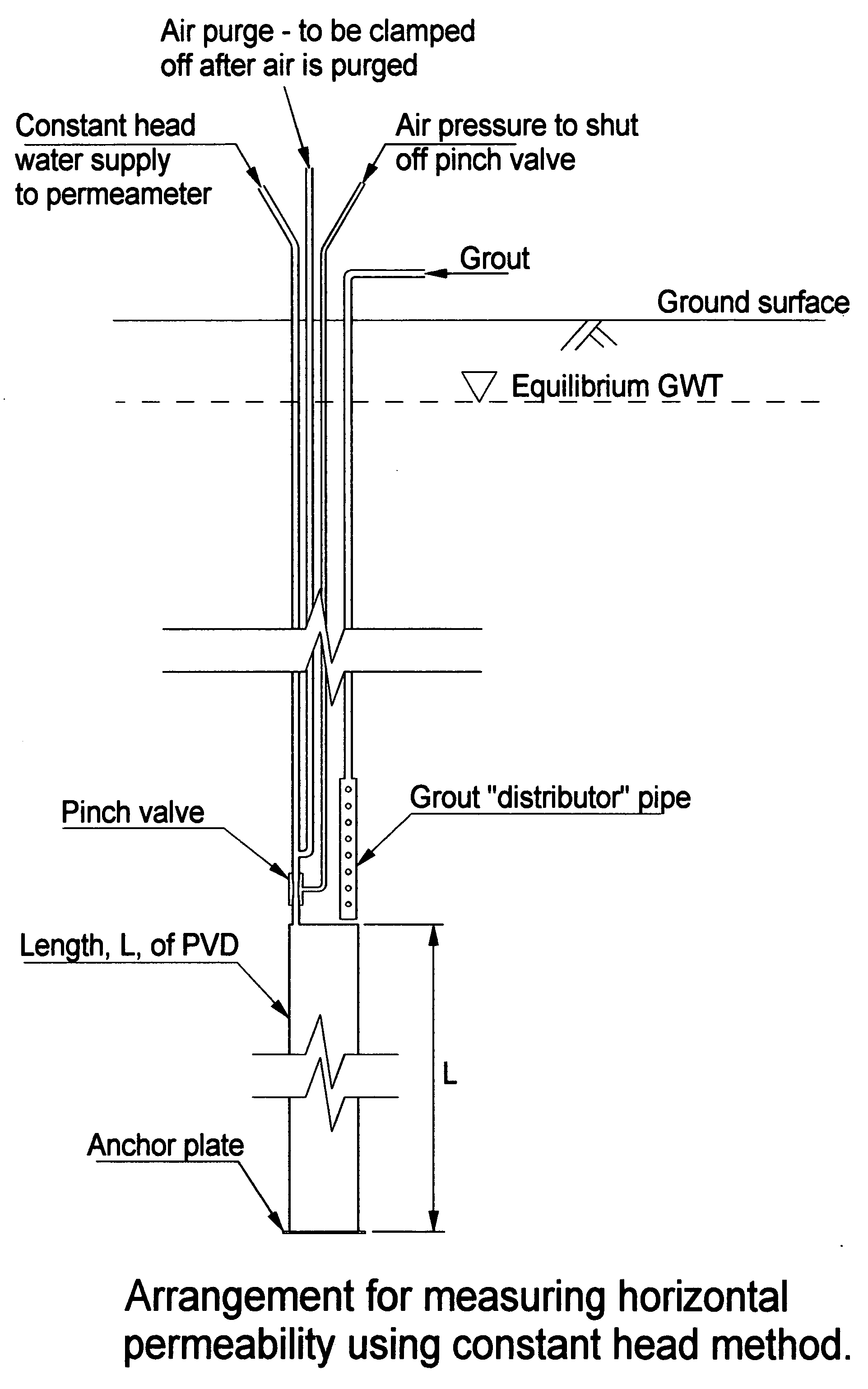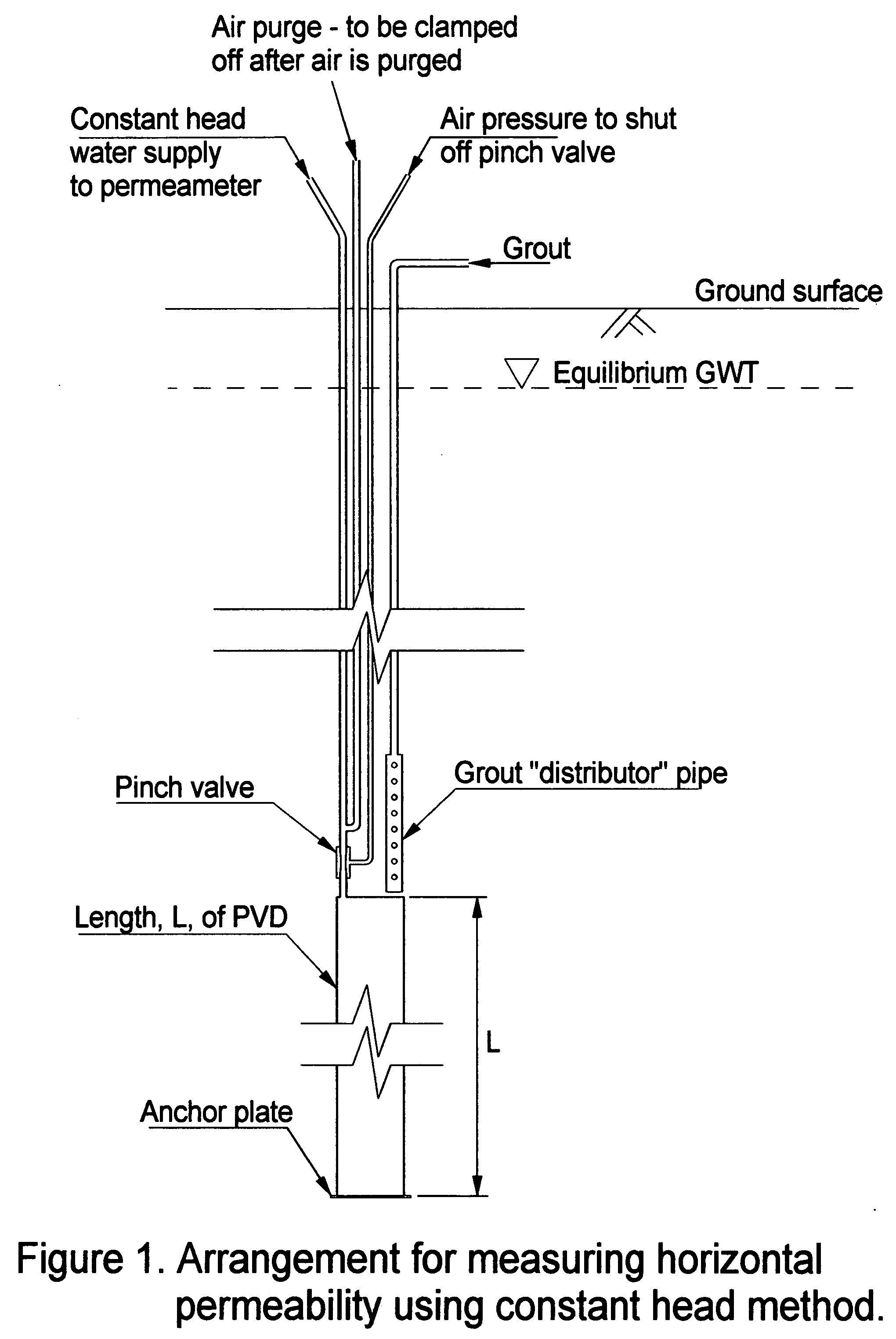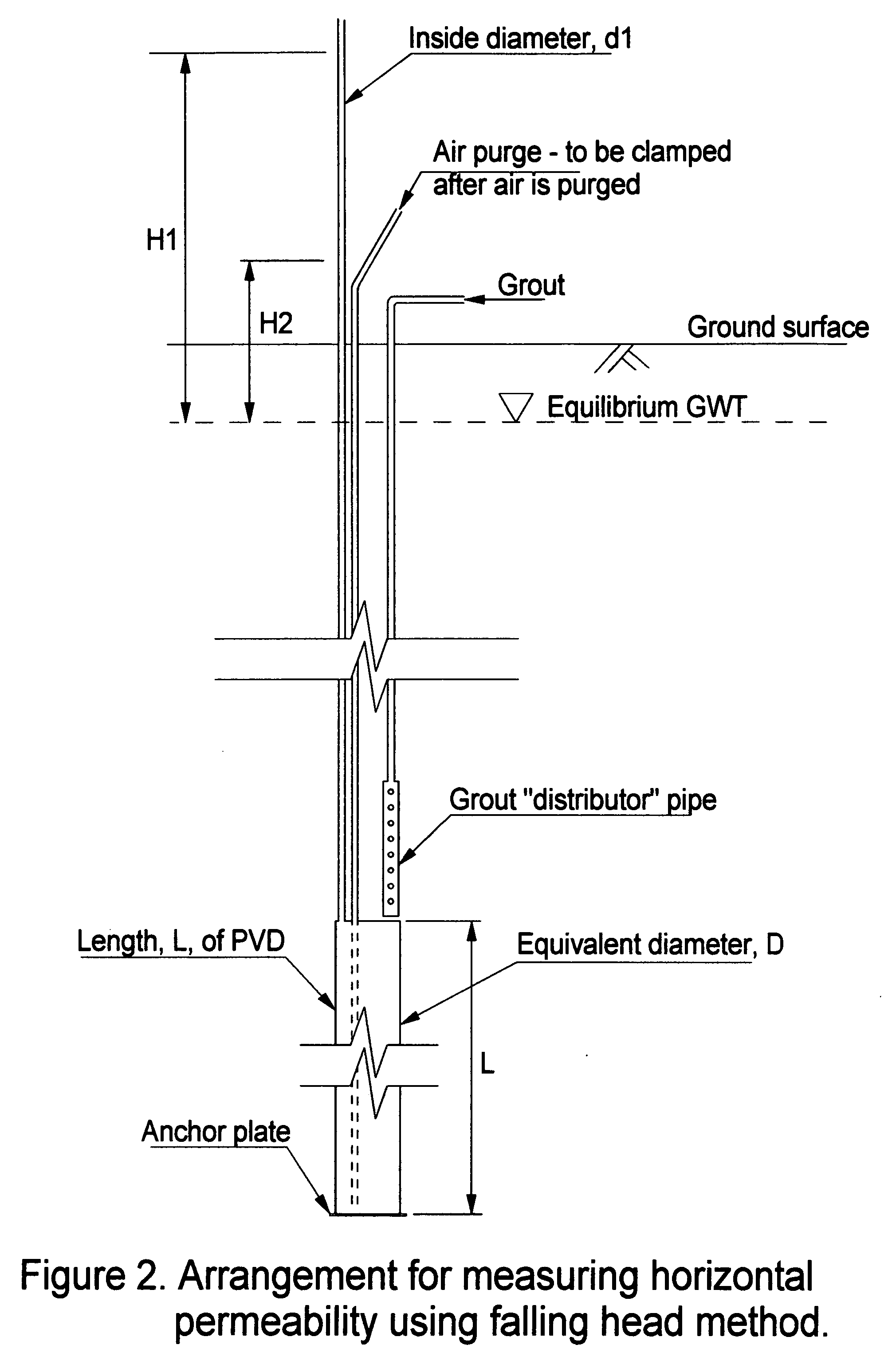Measuring soil permeability in situ
a technology of soil permeability and in situ measurement, applied in the field of soil improvement, can solve the problems of large settlement, difficult to measure, and take years to occur
- Summary
- Abstract
- Description
- Claims
- Application Information
AI Technical Summary
Benefits of technology
Problems solved by technology
Method used
Image
Examples
Embodiment Construction
[0021] Presented here is a method that provides a measure of soil permeability in situ, and under installation and operating conditions, as they will exist for actual wick drain installations. The test apparatus consists of a length of wick drain material embedded in the ground at the depth under consideration. Tubes and pipes extend from the drain to the ground surface (see FIGS. 1 and 2).
[0022] This assembly is installed in the ground with the drain installation rig, using the same mandrel, anchor plate and installation procedures as will be used on the actual project. The drain test assembly is inserted into the mandrel on the installation rig with the anchor plate attached to the PV drain. The anchor plate will serve to cover the bottom of the mandrel preventing soil from entering the mandrel during penetration, and will anchor the test drain in place. The mandrel is then intruded by the machine into the ground to the desired depth, and withdrawn leaving the length, L, of wick ...
PUM
 Login to View More
Login to View More Abstract
Description
Claims
Application Information
 Login to View More
Login to View More - Generate Ideas
- Intellectual Property
- Life Sciences
- Materials
- Tech Scout
- Unparalleled Data Quality
- Higher Quality Content
- 60% Fewer Hallucinations
Browse by: Latest US Patents, China's latest patents, Technical Efficacy Thesaurus, Application Domain, Technology Topic, Popular Technical Reports.
© 2025 PatSnap. All rights reserved.Legal|Privacy policy|Modern Slavery Act Transparency Statement|Sitemap|About US| Contact US: help@patsnap.com



